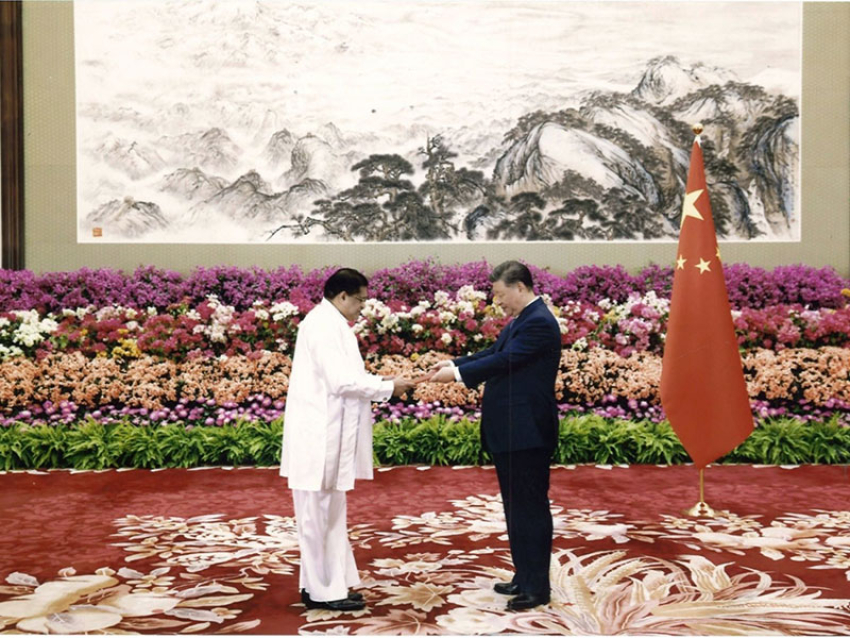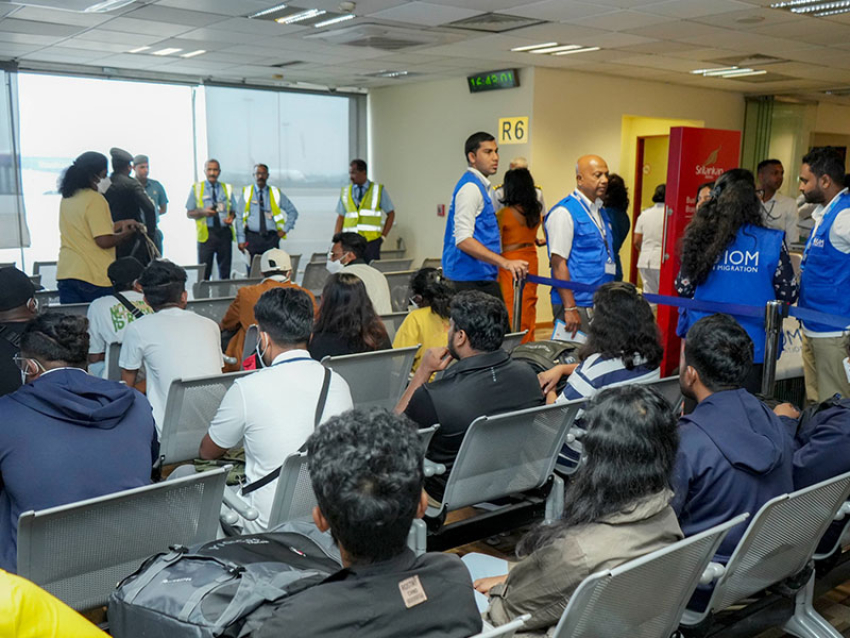Enterprise Sri Lanka, the government’s loan programme launched on June 22, is designed for young entrepreneurs in the country. The Gamperaliya scheme, implemented in accordance with Enterprise Sri Lanka in the country’s poorest regions, is one of the government’s primary focuses over the next two years.
Enterprise Sri Lanka is meant to be accessible for all districts, rich and poor, most and least-developed. Finance and Mass Media Minister Mangala Samaraweera inaugurated the first exhibition on the Gamperaliya scheme last week, while an exhibition on Enterprise Sri Lanka had been planned to be held between August 29 and 31, in the Moneragala district. More would follow in the Anuradhapura and Jaffna districts as well.
The exhibitions display the sweeping objectives of Enterprise Sri Lanka and Gamperaliya: raising the per capita income to USD 5,000, creating one million new jobs, doubling exports, and sustaining GDP growth at five percent. In its current iteration, more than a dozen loan schemes are expected to develop Small-Medium Enterprises (SMEs), promote green energy, empower farmers, reduce poverty, empower youth and women, as well as to promote tourism, exports and supply chain development.
Through these programmes, the government seeks to address the development of the nation as a whole, but is it feasible? In many districts, issues of indebtedness and unemployment had crippled local economies. Would the programme be accessible to them? Government officials from the Northern and Eastern provinces said it would. Enterprise Sri Lanka offers collateral-free concessionary loan schemes for 16 different categories of entrepreneurs: farmers and fisherman, owners of houses less than 1,000 square feet, journalists, young graduates, middle-income youth wishing to purchase a house for the first time, to name a few. The government’s stated purpose is to diversify economic growth and create 100,000 entrepreneurs by 2020.
Enterprise Sri Lanka would establish a new relationship between banks and Sri Lankans, to better serve the people. The scheme works in conjunction with all national banks: Bank of Ceylon, People’s Bank, as well as a number of private banks. Under Enterprise Sri Lanka, loans are provided through the banking system. “All Sri Lankans can access these loans,” Finance Ministry Development Finance Department Director Manjula Hettiarachchi said, “They have to pay interest rates. Most of these loans are subsidised by the government.”
Most of the schemes offer between 50 to 70 percent subsidies on interest rates. In some cases, under schemes designed for recent graduates and journalists, loans are given without interest. Sri Lanka had experienced economic growth during the last decade, characterised globally as a Middle-Income Economy, especially in the domestic sector. In 2015, the Census and Statistics Department, in onjunction with the World Bank, issued a report that the poverty rate was below 15 percent for a large part of the country.
“A majority of Divisional Secretariat divisions in the Colombo and Gampaha districts, as well as sizeable parts of the Kalutara and Polonnaruwa districts, are particularly well-off, with estimated poverty rates below five percent. In contrast, high poverty incidence concentrates in the Mannar, Mullaitivu, Batticaloa and Monegerala districts.” For the wealthiest districts in the country, the government’s Enterprise Sri Lanka loan programme is a way of expanding and stimulating further development of already-developed regions. In the poorest districts, the government is using the programme to develop under-developed areas.
In the past, the same financial programmes had not served poorer districts as they did in more developed regions. In the North and East for example, the government’s post-war reconstruction strategy focused on expanding credit and building infrastructure. With the sudden introduction of banks all over these war-affected areas, people unaccustomed and ill-equipped to strategically repay their loans, fell into deep indebtedness.Highlighting the topic, Hettiarachchi said, “Sri Lanka faces a debt crisis with microfinance, and it seen especially in the North and East. We will provide relief for people facing such issues, as well as those affected by droughts.”
One of the most meaningful aspects of Enterprise Sri Lanka, is its debt relief packages which pay off debts of up to Rs.100,000.Whether or not the relief packages go far enough in relieving debt, remains to be seen. When discussions on Enterprise Sri Lanka began sometime in 2017, the Office of National Unity and Reconciliation (ONUR) had its own loan programme, which specifically addressed the needs of entrepreneurs in the Northern and Eastern Provinces. Since the government’s national programme came into being, however, the ONUR’s loan scheme was dissolved. If Enterprise Sri Lanka is to be successful in the North and East, it would have to provide what the ONUR loan scheme did and more.
ONUR Deputy Directors Somasiri Ekanayake and Suduth Jayasinghe said that the ONUR’s mandate under Enterprise Sri Lanka, is to act as a coordinating body between the government and district officials. Jayasinghe said, “Enterprise Sri Lanka is accessible. There is a debt trap, and people are waiting for their guarantees by the government.”
Jayasinghe and Ekayanake highlighted how Enterprise Sri Lanka works in conjunction withGamperaliya, to provide basic infrastructure for people to succeed. According to Ekanayake,Gamperaliya, theoretically, would address basic requirements of young entrepreneurs attempting to run businesses, such as functioning roads and water tanks.Addressing the issue of loans in the North and East, Ekanayake said, “The critical problem is not an accounting one, but attaining two guarantees from government officers.”
In order for entrepreneurs to receive these loans, they need to have assurances from government officials that they are equipped to manage it. Under the ONUR loan scheme, those regulations were relaxed so all that was required of an applicant was submitting the support of two or three other bank account holders, such as other entrepreneurs from their village. It fostered a spirit of cooperative community development, at least in the process of receiving loans. But ONUR officials were unsure whether or not their recommendation had made it into the final draft of Enterprise Sri Lanka.
“We highlighted this requirement during meetings. It is a barrier for the development of the Northern and Eastern provinces. We stressed the provision of concessional loans,” Ekanayake added. The Jaffna District Secretariat Deputy Director said, “Enterprise Sri Lanka is accessible to everyone…I feel that it will be helpful for the people in the Jaffna district.” He was not alone; the Mullaitivu District Secretariat Director of Planning said, “It is a good scheme…Entrepreneurs willing to expand their business will benefit from this programme.”
If Enterprise Sri Lanka succeeds, it may help alleviate economic stagnation in years to come. When Finance Minister Mangala Samaraweera announced Enterprise Sri Lanka on May 31, he said, “Prior to 2015, government revenue dropped for decades and reached one of the lowest in the world. Debt servicing exceeded the total government revenue. The effects of previous debts will be felt more in future. More than 75 percent of government debt servicing during 2019 and 2022, will be due to the maturing or bunching of debt obtained prior to 2015.”
If the Finance Minister’s economic forecast is correct, stimulating domestic investment through loan schemes such as Enterprise Sri Lanka is important now more than ever. The government assesses that it would create jobs and propel innovation that would have a multiplicative effect on the expansion of the economy.




















